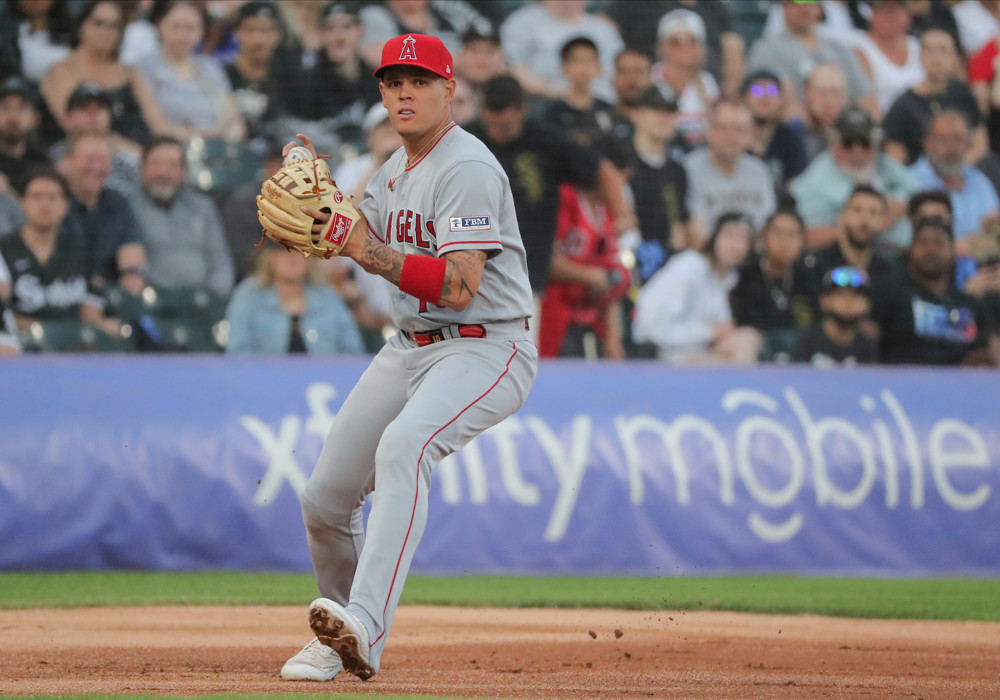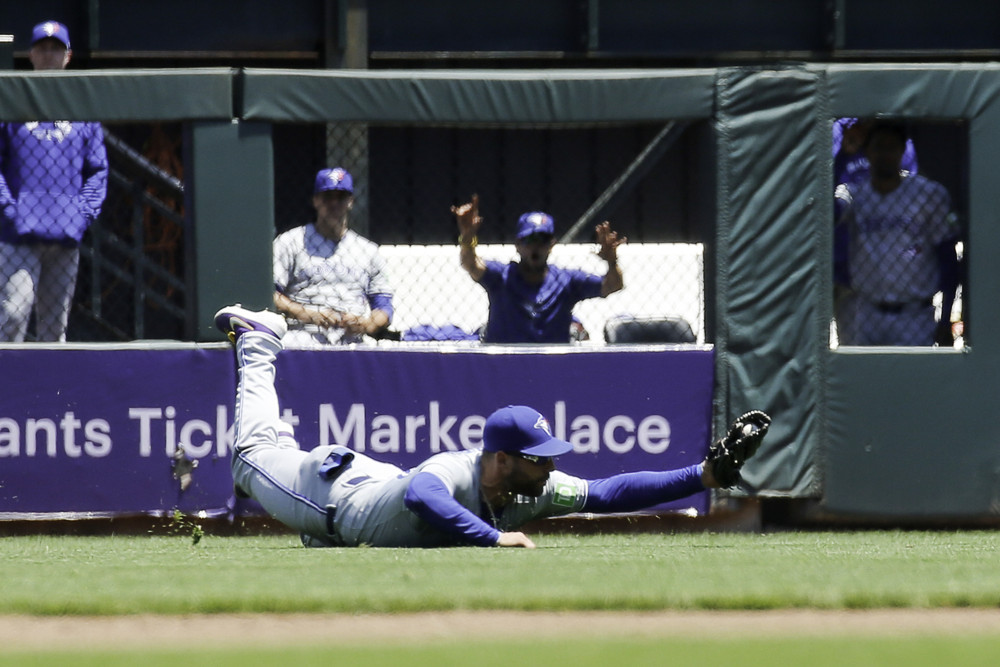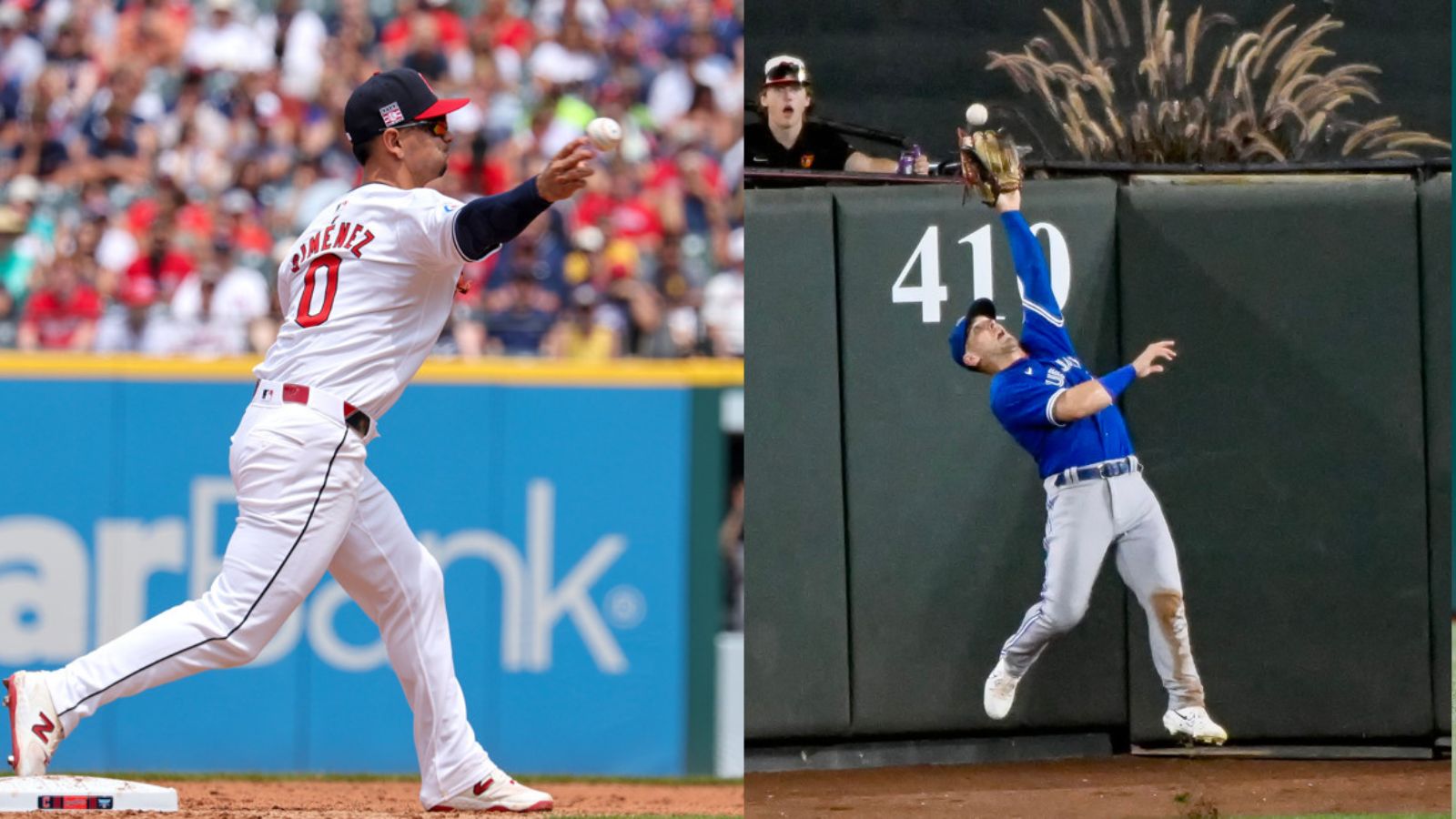Photo: David John Griffin/Icon Sportswire
BY ALEX VIGDERMAN
This year feels somewhat special to us at SIS because it’s the 10 year anniversary of a pretty cool honor, our Strike Zone Runs Saved research winning the Sloan Sports Analytics Conference’s award for the best research paper. The paper was called Who Is Responsible For A Called Strike?
For those not familiar, Strike Zone Runs Saved (SZRS) is our method of capturing catchers’ skill in gaining extra strikes by framing the pitch as it comes in.
The core concept is pretty simple. We start with an expectation for how likely the pitch is to have been a strike, and we compare that to what actually happened. That expectation takes into account handedness, the count, the location, and even how much the catcher’s glove had to move off its initial target. We then attach a run value which is basically the value of turning a ball into a strike, which is about a tenth of a run.
Here are the leaders among catchers who played at least five years in that span, both in total and per season.
Strike Zone Runs Saved leaders, 2015-24
| Total SZRS | |
| Tyler Flowers | 68 |
| Yasmani Grandal | 66 |
| Austin Hedges | 64 |
| Christian Vázquez | 50 |
| Roberto Pérez | 33 |
Strike Zone Runs Saved per season leaders, 2015-24 (min 5 seasons)
| SZRS per season | |
| Tyler Flowers | 11.3 |
| Yasmani Grandal | 6.6 |
| Buster Posey | 5.3 |
| Austin Hedges | 5.3 |
| Christian Vázquez | 5.0 |
Tyler Flowers is one of those players who is primarily known because of our ability to measure this skill, and you can see why. We talked with him a couple years ago about it, when Defensive Runs Saved turned 20.
This range of years covered the back half of Buster Posey’s career, but that half a win (by WAR standards) per year of framing value makes a big impact for a player who didn’t play into his mid-to-late thirties.
Here are the year-by-year leaders in Strike Zone Runs Saved. Flowers either shared the lead or led outright four straight years.
Year-By-Year Leaders in Strike Zone Runs Saved
2015 to 2024
| SZRS | |
| 2015- Tyler Flowers | 13 |
| 2016- Flowers & Yasmani Grandal | 15 |
| 2017- Tyler Flowers | 20 |
| 2018- Flowers, Grandal & Max Stassi | 10 |
| 2019- Austin Hedges | 18 |
| 2020- Yasmani Grandal | 5 |
| 2021- Max Stassi | 10 |
| 2022- Jose Trevino | 12 |
| 2023- Hedges, Patrick Bailey & Francisco Alvarez | 11 |
| 2024- Patrick Bailey | 15 |
Our Strike Zone Runs Saved data actually dates back further than 10 years. We’ve been tracking it since the 2010 season. An overall leaderboard has Yasmani Grandal (87) at the top, followed by Flowers (85), Jonathan Lucroy (80), Russell Martin (72) and Posey (71).
Which organizations have developed framing the best?
It’s hard to know what teams are doing in terms of specific player development practices, but we can try to get at it from different angles.
For example, over the last decade three teams set themselves apart in how much improvement their acquired players showed year-over-year. Players acquired by the Athletics, Yankees, and Brewers over this decade averaged improving by at least 5 runs saved per 900 innings caught. (We’d give more credit to the A’s and Brewers, though, because they did this across many more players.)
A team that falls just short of that distinction is the Diamondbacks, who had 18 catcher acquisitions and averaged just under 4 additional runs saved per 900 innings. That’s a big deal because they had some of the worst performance from homegrown catchers (-5 runs saved per 900 innings from 4 players).
Bringing up a successful player from your system might just be about the player’s talent, and we have a hard time teasing out those elements, but it’s still worth noting that the Guardians clearly outpace the rest of the league in average SZRS from homegrown players (7 runs per 900 innings). The Astros are the only team within a run of them (6.4 per 900 innings) and we should give credit to the Giants, who had similar production (5 runs per 900 inn) with more homegrown catchers (7 compared to 5 for the leaders).
How much better are today’s framers than catchers a decade ago?
The strike zone gets adjudicated differently over time, but we can approximate the change in how good catchers are by placing them into each other’s context.
In other words, we can throw pitch results from the catchers in 2014 (the year before the Strike Zone Runs Saved presentation) in with the 2024 season sample, or vice versa, and compare our evaluation in this blended environment to their original context.
As an example, Cal Raleigh saved 11 runs with his framing in 2024. If we threw 2014 catchers into the mix, by virtue of that comparison we’d have him estimated at about 14 Runs Saved.
Correspondingly, Mike Zunino tied for the MLB lead with 16 Strike Zone Runs Saved in 2014. If he had been compared to 2024 players, he would have been more in the 12-13 run range.
Because every catcher saw different pitches the changes wouldn’t be entirely consistent, but on average the gap is about 4 runs per 900 innings.
That might not feel like a lot, but it certainly manifests itself at the bottom end of the population. Just based on actual Strike Zone Runs Saved, there were four catchers in 2014 who were worse relative to their context than any 2024 catcher was last year. With this merged group, the bottom 18 catchers are all from 2014.
Next week, we’ll look at Strike Zone Runs Saved from another angle: how it evaluates the batter, pitcher, and umpire (yep, the stat can do that too). What can we learn about the players who had the most (and least) success over the last 10 years? And we’ll have notes on the umps too.



